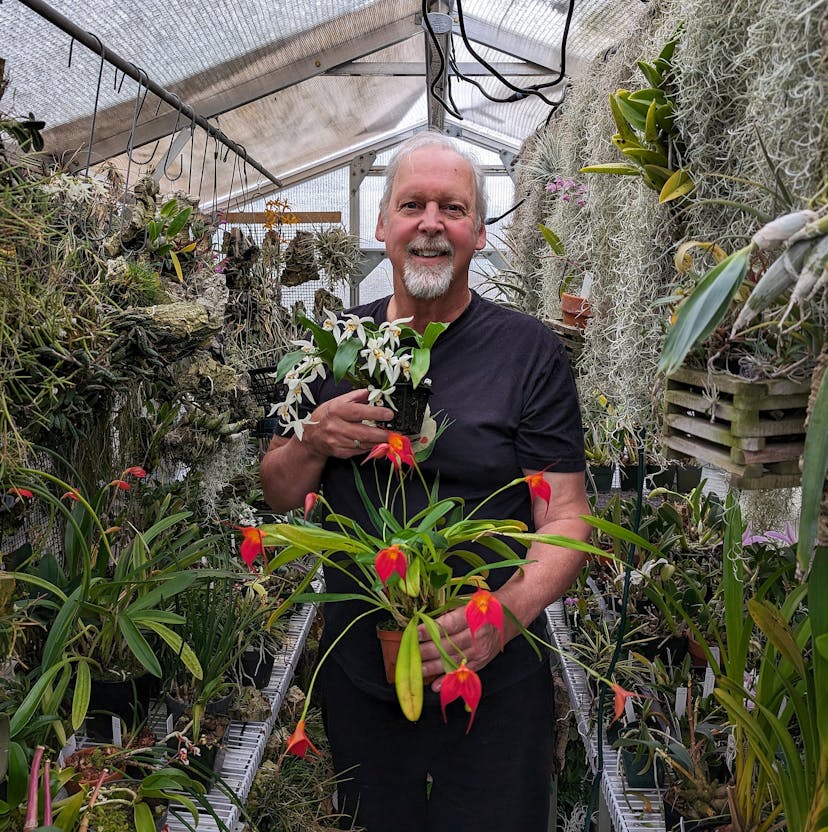

Ron Parsons

Biography
Ron Parsons has been growing orchids for nearly 49 years, and has been interested in the species for most of that time. He loves to photograph orchids and other flowers whenever he can, and does so as often as possible. Ron has more than 100,000 digital images, most of which are of orchids, and still retains a slide library that exceeds 100,000 botanical images. He has given more than 500 talks on various botanical topics, and has nearly 6500 published photos. Ron has co-authored four books on botanical subjects, all with Mary E. Gerritsen. The first two, published by Timber Press, are Masdevallias, Gems of the Orchid World and Calochortus, Mariposa Lilies and their Relatives. Their third book, a two-volume set, A Compendium of Miniature Orchid Species was published by Redfern Natural History Productions in January 2014. In 2019 The American Orchid Society Guide to Orchids and their Culture was released, and is on its third printing. They have recently completed a fifth book, a much-revised second edition of A Compendium of Miniature Orchids Species. It is now in four volumes with 3100 photos (1800 of those are new), including those of more than 500 species not in the first edition. The set was released in early October, 2021.
Talks and Abstracts


Orchids of Sichuan, China

Back to China

Botanizing in Southern Ecuador

Orchid Hunting on the Island of Rhodes

Orchids of Southeastern Australia

Stanhopeas and their Relatives

An Orchid Adventure in Colombia

Spring Orchids of Mallorca

The Lure of Miniature Orchids

An Orchid Adventure in the Philippines

The Genus Dendrobium

Madagascar, A Land of Many Contrasts

Bulbophyllum, A Study in Diversity

The Genus Cymbidium

Crete: Isle of Orchids

FREE ACCESS: Orchid DealWire
Get notified when orchid vendors have special promotions and exclusive savings.







